In the microservices-and-API-first age of today, it’s more critical than ever that APIs be reliable and consistent. That’s where API contract testing steps in. It acts as a safety net for both API providers and consumers, ensuring that all parties are on the same page as to how an API should act before a line of integration code can ever ruin production.
In this simple-to-understand tutorial, we will discuss what is API contract testing, why it is necessary, how it happens, and how to begin. Let’s get started with an exciting sneak peek into the core concepts that ensure API reliability and alignment across teams.
Understanding the Basics of API Contract Testing
API Contract Testing is where an API is tested against a pre-specified contract. In most cases, contracts will be defined in file formats such as OpenAPI, Swagger, or RAML. The contract includes expected structures for both requests and responses, which may comprise HTTP methods, status codes, data formats, headers, among others. Think of it as a formal agreement between API producers and consumers.
If either side of the contract is violated, the test fails– an early indicator of an integration problem when the development process is done. Simply put, API contract testing guarantees that the API works precisely as defined– no surprises for the consumer, no suffering for the developer.
Why Is API Contract Testing Important?
Now that you understand what is api contract testing, let’s understand why more and more teams are adding API contract tests to their CI/CD pipelines:
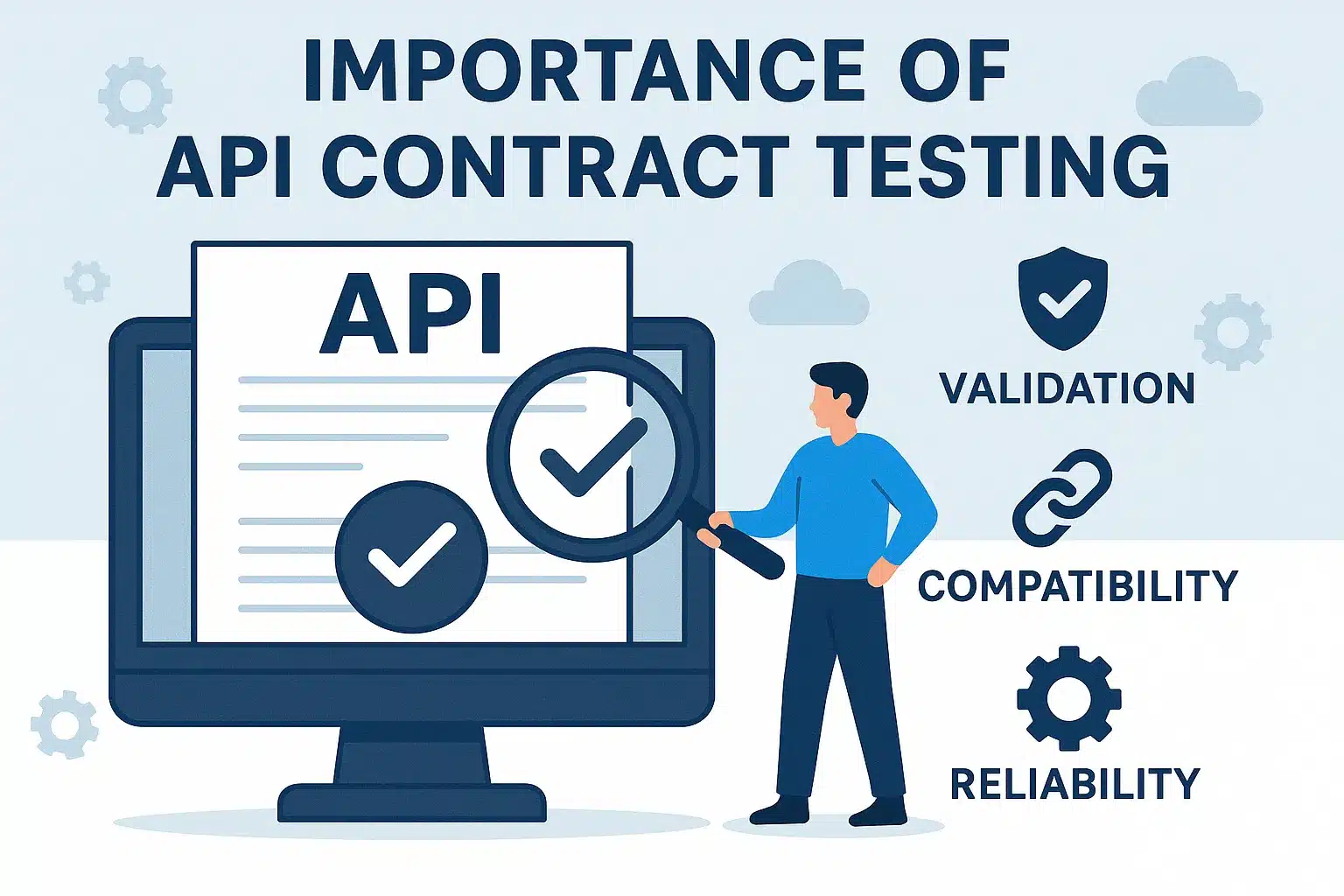
1. Catches Breaking Changes Early
APIs do change, and schemas change along with them. But one minor, untested change– for example, renaming a field– can make consuming services balk. Contract testing in APIs helps catch such changes prior to the production environment.
2. Reduces End-to-End Test Dependencies
While useful, E2E tests may be slow and flaky. API contract testing is quicker, more consistent, and less maintenance-intensive.
3. Improves Developer Collaboration
Contract testing acts as a shared language between frontend and backend teams. Everyone knows exactly what to expect from the API.
4. Accelerates CI/CD
By validating contracts during builds, you can prevent broken code from being deployed, leading to faster and safer releases.
How Does API Contract Testing Work?
The process involves two main participants:
API Provider (Producer)– The team or service that builds and exposes the API
API Consumer– Any client (frontend, service, or app) that uses the API
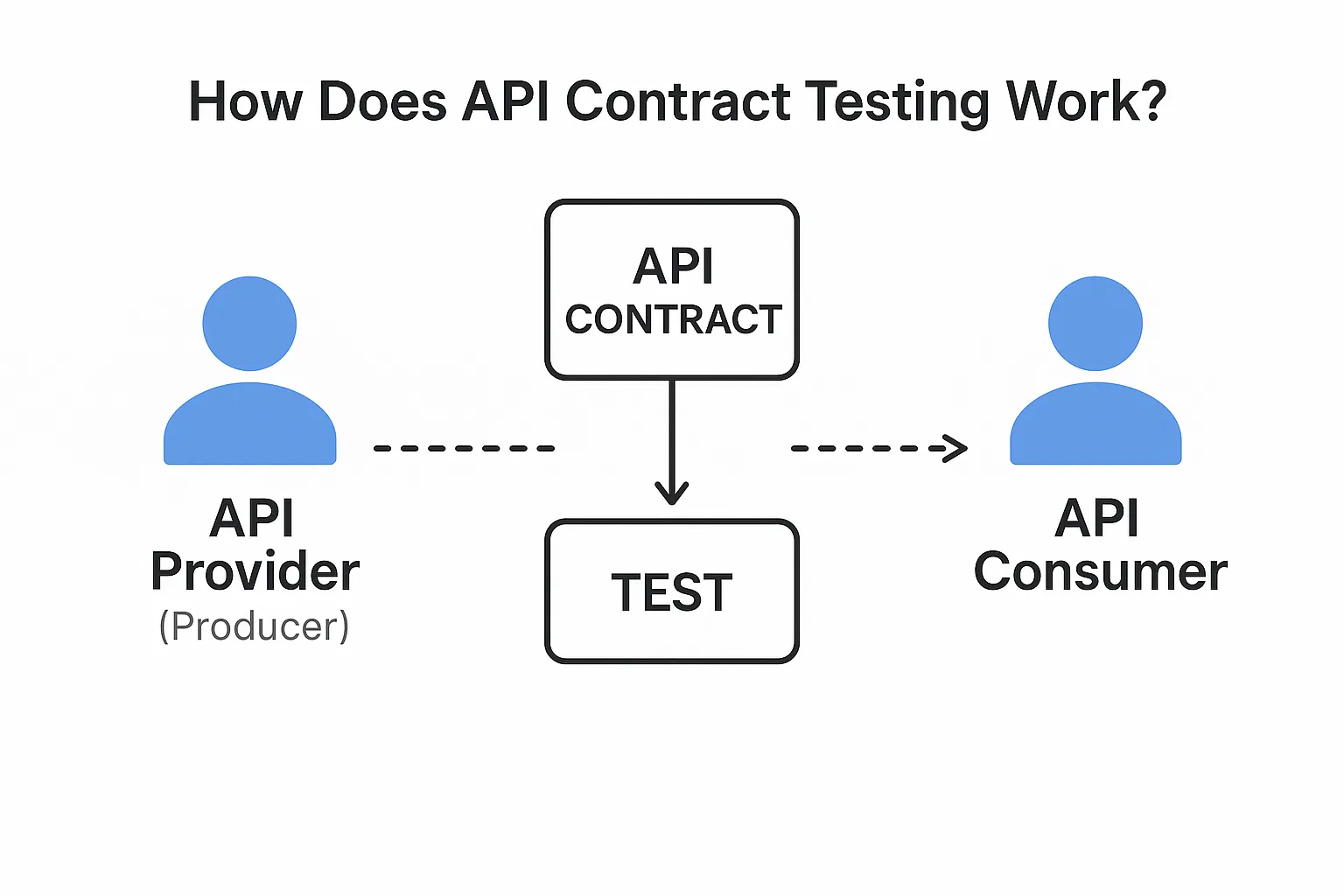
The testing flow usually involves:
➤ Step 1: Define the Contract\
This includes details like:
-
Endpoints
-
HTTP methods (GET, POST, etc).
-
Input and output schemas.
-
Expected status codes.
-
Headers.
Frameworks such as OpenAPI, Swagger, and RAML are typically used to specify this contract.
➤ Step 2: Validate Provider Implementation
When the provider implements the API, the implementation is validated against the specified contract. Deviation (missing property, incorrect data type, incorrect status code) makes the api contract test fail.
➤ Step 3: Validate Consumer Expectations
In consumer-driven contract testing, the consumer specifies its expectations from the provider. They are translated into tests that the provider has to pass. This assures that the API is meeting actual usage requirements.
➤ Step 4: Continuous Integration
Contracts are validated in CI builds so that regressions can be caught as early as possible. This integrates contract testing as a natural part of DevOps pipelines.
What Is Contract Testing in API Development?
Contract testing in API, assists in making sure services can integrate safely, particularly within distributed systems where groups operate in isolation.
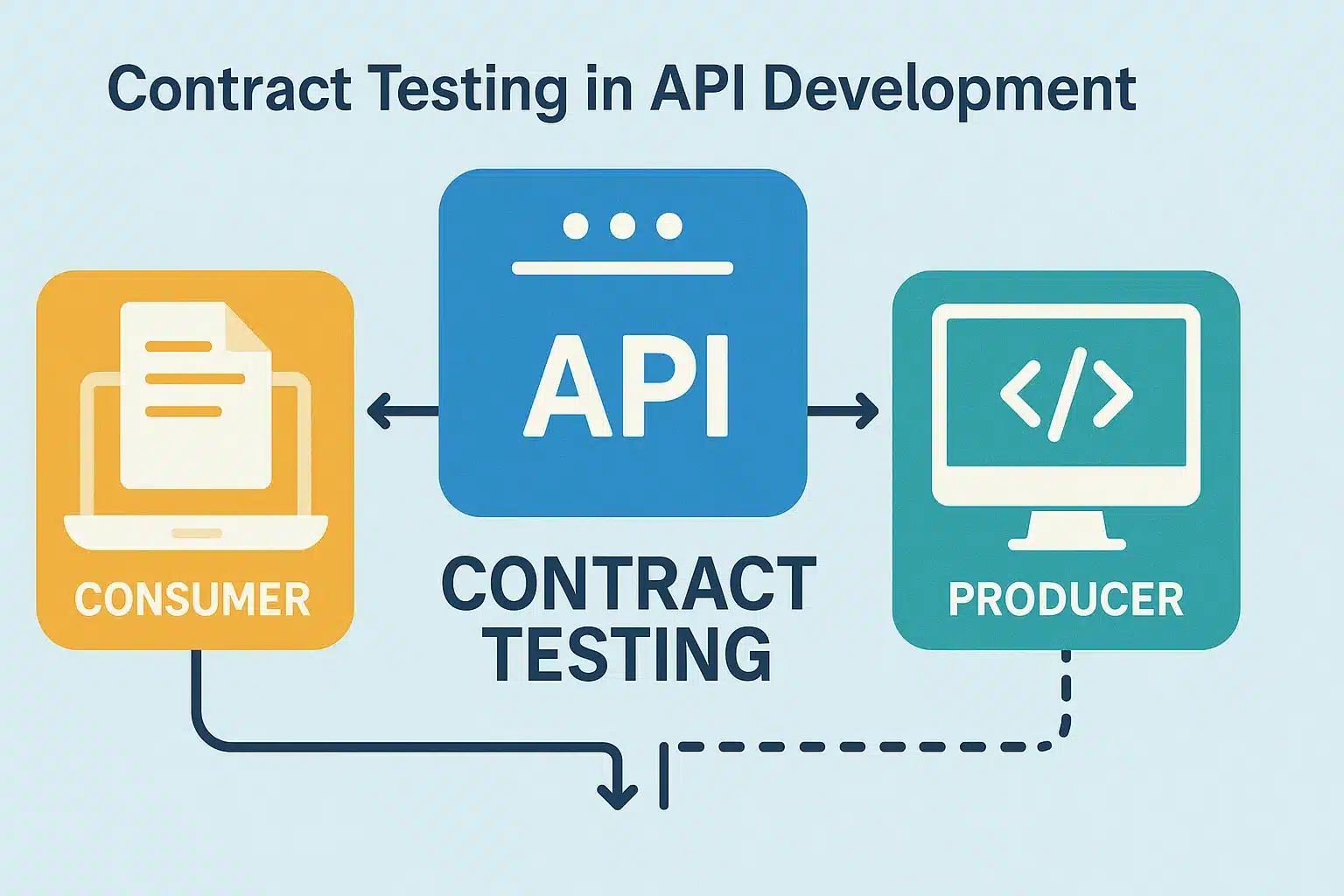
Testing avoids tight coupling and encourages a fail-fast philosophy– i.e., failure is detected early on before it reaches end users. Within microservices designs, in which services are always calling APIs, contract testing becomes significant in maintaining the communication predictable and seamless.
Commonly Used API Contract Testing Tools
Some of the widely used tools to practice api contract tests are:
-
Keploy— Can be used to extend support for contract validation within integration tests.
-
Pact— ideal for consumer-driven contract testing in microservices.
-
Postman— Does schema validation through OpenAPI contracts.
-
Swagger/OpenAPI Validator— Tests requests/responses against contracts.
-
Dredd— Tests your API against the API description.
Each of these tools serves different strengths based on whether you’re validating on provider-side or consumer-side.
Contract Testing vs Other API Tests
Here is a comparison of contract testing with other api testing for a better understanding of the use case of each:
| Testing Type | Focus | Best For |
|---|---|---|
| Contract Testing | Request/response schema | Schema compliance and early validation |
| Unit Testing | Internal logic | Business rules inside a service |
| Integration Testing | Combined components | Interactions between services |
| End-to-End Testing | Full user flow | Real-world user behavior |
Though these testing types are supplementary, contract testing is special in the sense that it validates the agreement between parties directly without requiring the complete system.
Advantages of API Contract Testing
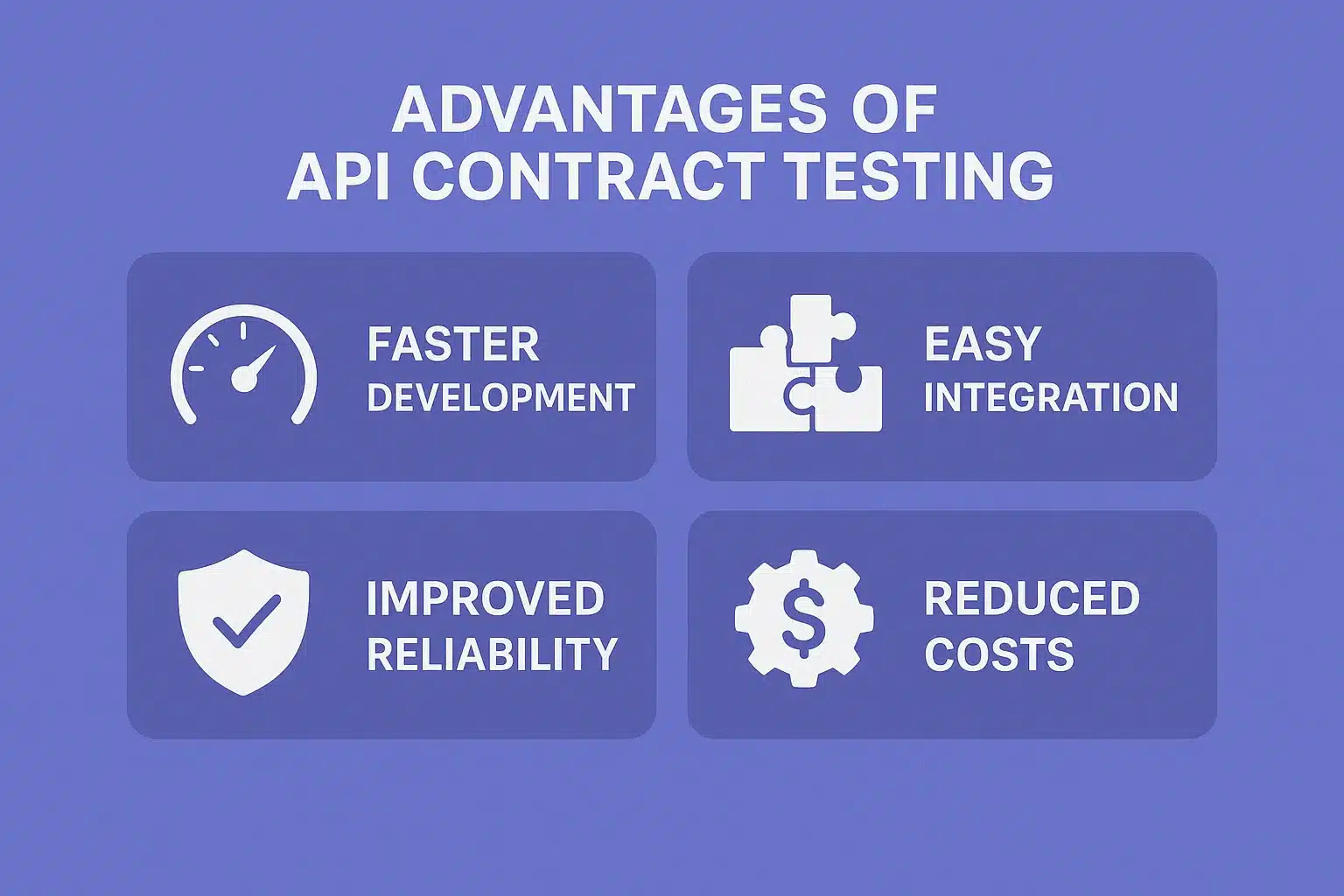
-
Identifies schema change issues ahead of time.
-
Enhances integration reliability.
-
Accelerates development by eliminating guesswork.
-
Eliminates production bugs due to incompatible APIs.
-
Facilitates quicker iterations with assurance.
Whether you’re dealing with a REST API, GraphQL, or event-driven system– api contract test practices yield an evident ROI in terms of speed, quality, and stability.
Best Practices for Getting Started with API Contract Testing
If you are relatively new to testing API contracts, the following tried-and-tested best practices can be useful:
-
Start Small– Begin with critical endpoints.
-
Use Open Standards– Use OpenAPI or Swagger for easy integration.
-
Automate Everything– Automate with your CI/CD pipeline.
-
Practice Consumer-Driven Testing– Have the consumer dictate what is important.
-
Treat Contracts as Code– Version them, review them, test them
Conclusion
In a nutshell, API contract testing involves no surprises. It’s about the fact that what your API promises, it actually delivers, and then those who are going to consume this promise trust it every time. As systems become more distributed and even faster, the role of contract testing in API development will just be even more crucial. Start small, stay consistent, and integrate it early– that’s the recipe for reliable APIs.
FAQs
1. Is API contract testing identical to integration testing?
Ans: No, it is not the same as integration testing. Whereas integration testing checks how various components of a system integrate, contract testing is particularly concerned with checking that an API’s behavior and structure conform to its contracted specifications. It is about ensuring expectations, rather than execution flow.
2. How does Keploy facilitate API contract testing?
Ans: Keploy simplifies API contract testing since it automatically captures API requests and responses during test generation and then treats them as a source of truth and plays and validates them across different environments. If the structure and status codes change or the payload is different, and deviates, Keploy flags that deviation and allows teams to ensure contract compliance and prevent manual writing of schema tests.
3. What will happen if an API breaks its contract?
Ans: If an API violates its contract– for example, by altering a response format, deleting a required field, or changing status codes– contract tests will fail. Early failure warns teams before the changes affect dependent services in prod, avoiding integration problems and broken user experiences.
4. Is API contract testing appropriate for microservices?
Ans: Yes. it is extremely useful for microservices architecture, where independently built many services depend on APIs to talk to one another. It guarantees that every service still satisfies the expectations of its consumers, allowing deployments to be faster and safer, with improved team autonomy.
5. How do I create a contract for an API?
Ans: You can specify an API contract in specification styles such as OpenAPI (previously Swagger), RAML, or AsyncAPI. These contracts outline the required request/response structure, headers, methods, and status codes. Defined, they are a single source of truth for API producers and consumers and can be checked using automated contract testing tools.
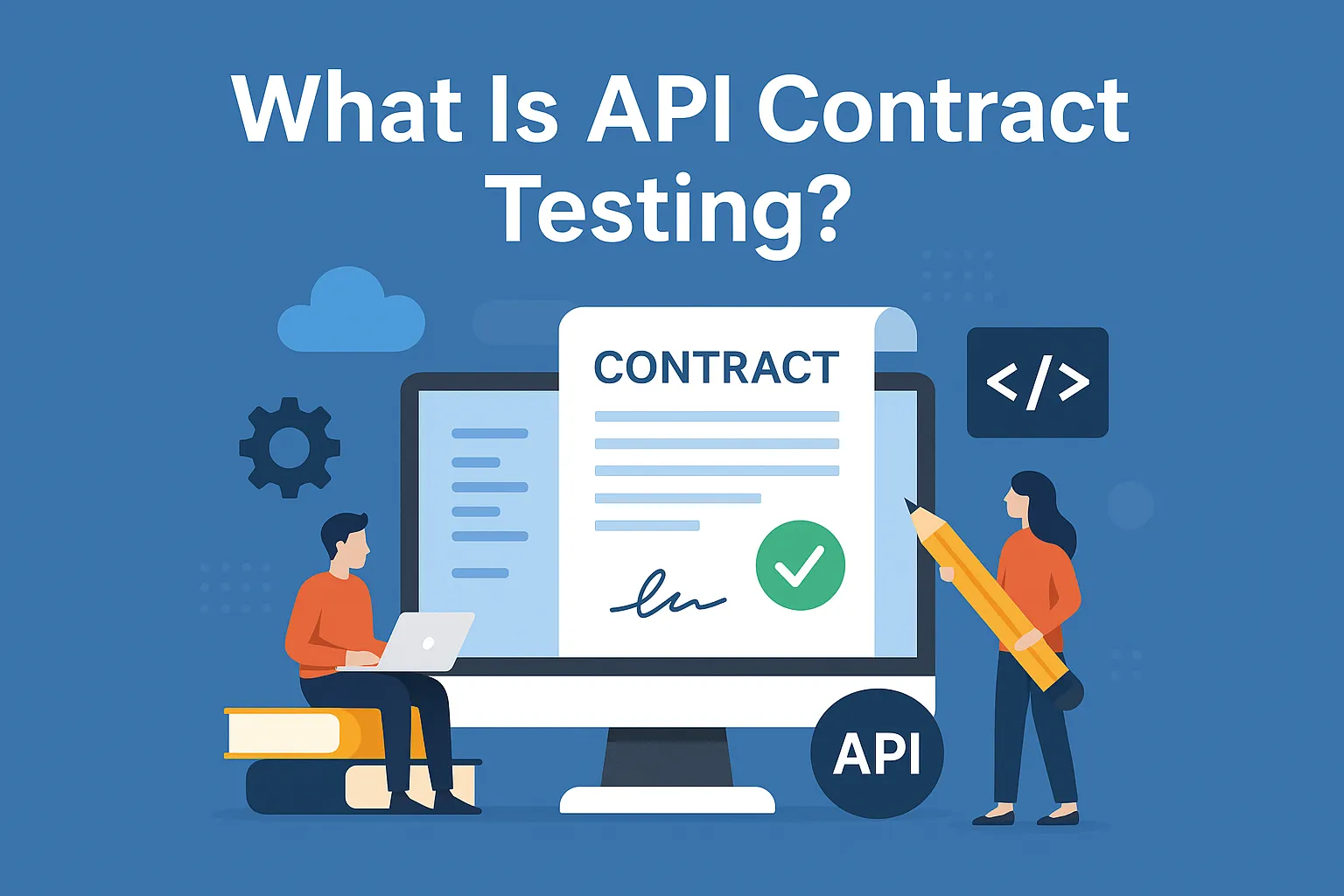

Leave a Reply